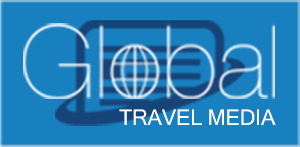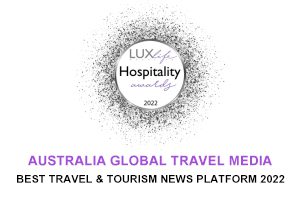 A few years ago, if you asked an Aussie family where they’d go for the next big holiday, they’d say the United States. From the buzz of New York to the thrills of Disneyland, America had a near-mythical pull. That’s changed.
A few years ago, if you asked an Aussie family where they’d go for the next big holiday, they’d say the United States. From the buzz of New York to the thrills of Disneyland, America had a near-mythical pull. That’s changed.
The shift didn’t happen overnight. It started with a tweet, tariffs, and headlines about trade wars. Somewhere in between, as the rhetoric rose and borders tightened, global tourism took a hit — with Australia caught in the middle.
The Trade War Nobody in Tourism Saw Coming
When Donald Trump slapped tariffs on everything from Chinese steel to European wine, few in the tourism world blinked. It seemed like a trade play, not a tourism one. But by the time retaliations began, it was clear — the impact wouldn’t stay confined to shipping docks.
Travel thrives on goodwill. And suddenly, goodwill was in short supply.
The numbers began to tell the story. By 2018, outbound travel from Australia to the U.S. slowed—nothing drastic, just enough to make tourism boards and airlines uneasy. Currency swings made things worse. The Aussie dollar took a hit, pushing up the price of already expensive long-haul fares.
Australia Watches, Wary and Reactive
Behind closed doors, the sentiment in Australia was cautious. Tourism officials didn’t want to criticise a close ally, but the reality was stark. Political messaging from Washington was making travellers uneasy.
“Whether it’s intended or not, the mood filters down,” one adviser at Tourism Research Australia told us off-record. “People start questioning whether the destination is as open as it once was.”
Add rising airfare costs—driven partly by tariffs on aircraft components—and you get a perfect storm. Travellers started to look elsewhere. Japan? More affordable. Europe? A friendlier tone. Southeast Asia? Closer, easier, warmer.
Inbound U.S. Tourism Stalls
America didn’t just lose Australian tourists. It lost appeal globally. Between 2017 and 2019, the U.S. dropped in global tourism rankings. The U.S. Travel Association noted a slide in market share and billions in potential tourism dollars left on the table.
The optics turned Many potential travellers off: visa delays, stricter border policies, and the not-so-subtle “America First” drumbeat. To a tourist, that doesn’t sound like “you’re welcome here.”
Dr Carla Sanchez, a tourism academic from the University of Sydney, summed it up:
“You can’t separate travel from politics anymore. If a country feels combative, people will think twice before visiting.”
Australia’s Tourism Pivot: Looking Elsewhere
Australia didn’t sit idly by as outbound travel to the U.S. slowed and uncertainty rose. It moved quickly to strengthen ties in Asia and Europe. Campaigns were retooled. Markets like India, Japan, and Indonesia saw a new focus. Even domestic tourism got a bit of a push.
Was it a snub to the U.S.? Not quite. But it was a reality check.
“We can’t afford to be sentimental,” said one senior figure in Austrade. “We have to follow the data — and the data said our travellers were starting to avoid the U.S.”
Bridges Burn Easier Than They’re Built
Julie Monroe, an analyst with Global Hospitality Insight, put it bluntly:
“Destinations spend decades building their image. One bad political cycle can undo it.”
During Trump’s presidency, America went from aspirational to adversarial in many travellers’ eyes. And while the reasons were political, the fallout was commercial.
Visa rules tightened. Consular staff were stretched. Tourists hesitated. Conferences relocated. Students reconsidered.
While this was happening, countries like Canada, Germany, and even New Zealand picked up the slack. They rolled out the welcome mat, and people came.
A New Tone, But Lingering Caution
The Biden administration took a different approach—more diplomatic and cooperative. Brand USA campaigns were relaunched, and tourism was put back on the global stage.
But recovery has been uneven. Some tourists returned. Others stayed away.
Restoring trust is more complicated than breaking it. For Australia, the lesson was clear: no matter how familiar the relationship, complacency is costly.
The Bigger Picture: Tourism Isn’t Just Travel
The Trump years highlighted how interlinked tourism is with everything else. Trade policy isn’t just economics—it’s emotion. When you impose tariffs, you send a message. And when you close ranks, people feel it.
Travel is more than movement. It’s perception, trust, and a sense that your visit is valued, not scrutinised.
And when that’s shaken, people go elsewhere.
Written by Don Power, International Correspondent




















